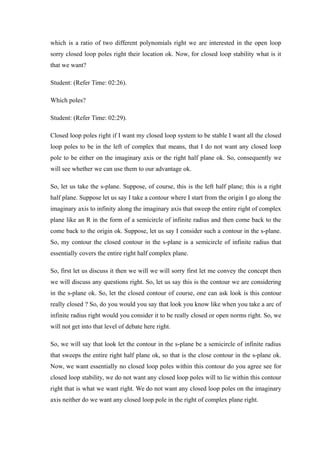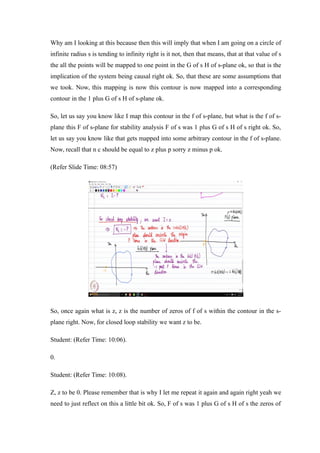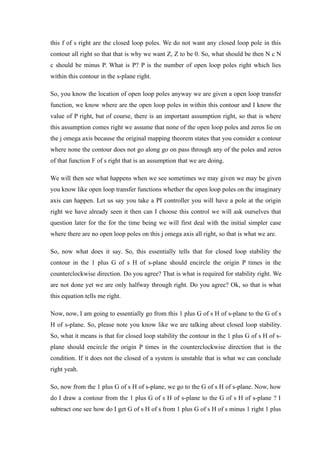- The document discusses applying the Nyquist stability criterion using the mapping theorem to determine closed-loop stability.
- It establishes that for closed-loop stability, the contour mapped from the open-loop transfer function in the s-plane should encircle the origin P times in the counterclockwise direction in the closed-loop transfer function plane, where P is the number of open-loop poles within the contour.
- Subtracting 1 from the closed-loop transfer function shifts the corresponding contour in the open-loop transfer function plane, such that the number of encirclements of the origin in the closed-loop plane equals the number of encirclements of the point -1 in the open









